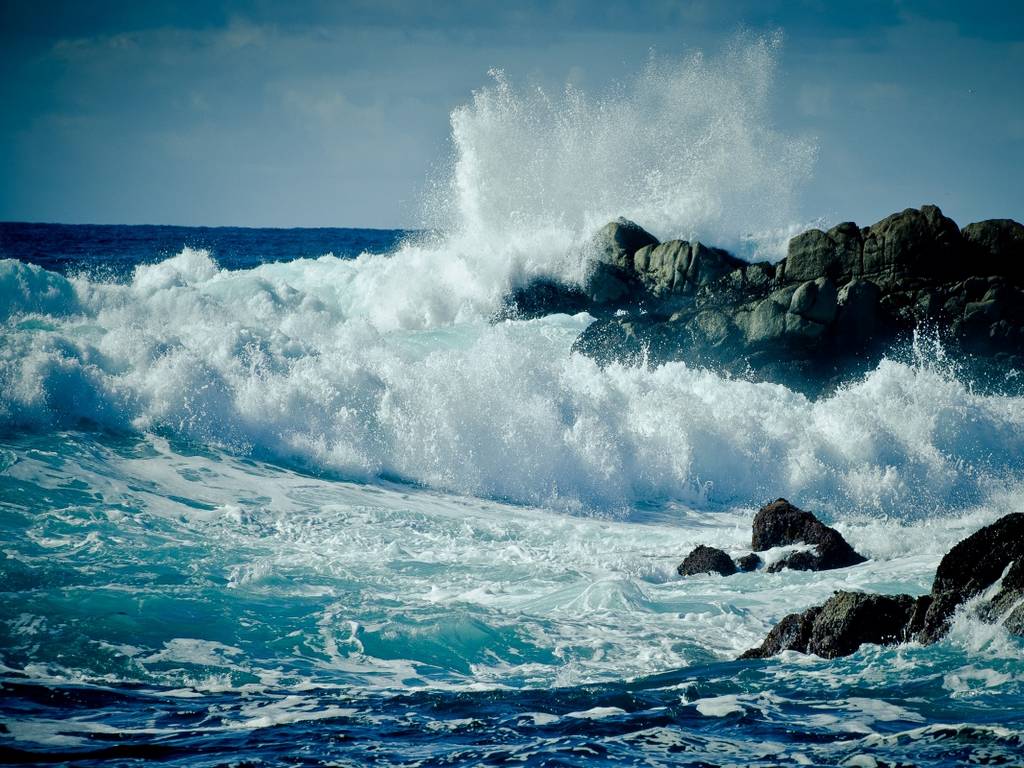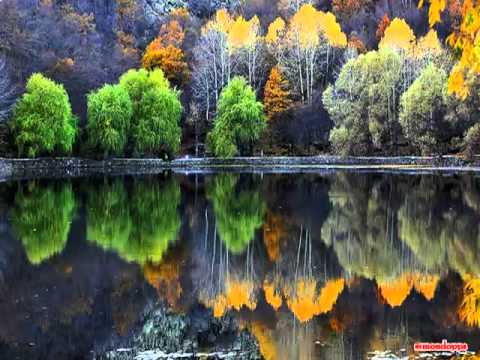A critical introduction to Mirco Lanzi

"The main theme of Lanzi’s work is water, along with the natural surroundings and features associated with it, such as sea beds, waves and fluvial and lacustrine landscapes."
Water is pivotal to our existence. It is a symbol of protection and preservation, but also of death. Wherever it is present - from the amniotic liquid that nurtures us in the maternal womb to the eerie depths of unexplored oceans - water reigns supreme, asserting its authority. This is what influences the artist, who then converts his ensuing emotions into feelings on canvas.
Though taken from photographic images, Lanzi’s works are not simply reproductions of reality: they are impassioned renditions of real life that transcend the merely visual. The artist fears the sea and the perils posed by deep water, and it is no accident that his watercolour paintings of ocean depths are dark with extensive use of layering. The colours are applied to wet paper, followed by a series of layers using the wet-on-dry technique. To the artist, water is not azure, but a deep, dark blue.
For Mirco Lanzi the ocean depths represent the places in his soul, the very seat of his introspection, whose floor, while distinguishable, nevertheless remains unchartered territory. It is a realm where everything is in a constant state of flux and, as such, remains mysterious and intriguing, thus echoing the themes of beauty, the picturesque and the sublime in Romanticism.
However, unlike the Romantics, Lanzi does not envisage man as a witness to the vastness of nature, but rather the animals that inhabit it.
A marine creature – be it manta ray, fish or octopus – is sublime and imposing, sometimes the protagonist of the scene and at others just a cameo, bearing witness to the fact that life exists in such a mysterious, threatening medium.
Just like the great watercolourists, Lanzi uses distinct, warm colours for subjects in the foreground that are meant to seem closer to the viewer and cool, sombre colours for more distant perspectives in the background. To create his subjects he makes extensive use of masking fluid, a latex solution which he applies with a brush. This technique is also used to preserve areas of the scene that are meant to retain their brilliance. In watercolour painting, unlike other painting techniques, it is not possible to make corrections through erasure or by applying thicker cover-up colours; pigments must be heavily diluted from the start in order to convey light effects using the brilliance of the sheet beneath.
Again, unlike with other media, the artist has to work from light to dark, not vice versa, which is why watercolour painting is one of the most difficult techniques of all to master. Several layers of colour producing a woven effect are applied using different procedures, each of which is studied separately by the artist beforehand so as to be sure of the end result.
In some instances the subjects of Mirco Lanzi’s works are invented, based on a monochrome graphite pencil sketch. Landscapes with waves lapping upon a shore or against cliffs will feature a seagull observing the sheer force of nature and the unbridled power of water and air. The waves appear to challenge the wind, seemingly set in motion by some arcane rhythm. Maritime scenes express all the fear and fascination of an infinite vastness. However, one must first lose oneself in the recesses of one’s soul and one’s unconscious fears in order to rediscover oneself in the light of experience and certainty.
This process leads to the understanding that all this water as portrayed by the artist is, first and foremost, a symbol of life and personal rebirth.
From the introduction by Barbara Ghisi
![]()
A review of the artist Mirco Lanzi
Mirco Lanzi was born in Modena in 1957. He completed his secondary education at the liceo artistico in Bologna, the high school specializing in the visual arts, and currently teaches in Modena at the A.Venturi (formerly the Istituto Venturi), which also specializes in the visual arts.
In 1990 he completed an international stone plate printing course at the Fine Arts Academy in the city of Urbino. The artist turned to painting in 1984, instantly demonstrating a meditative style with painstaking attention to form and a richness of elaborately detailed figurative images.
Blessed with a capacity for delicate, yet effective strokes, throughout his career this artist has always sought to achieve a pithy style whose formal rigour transcends that of typical art traditionalists. In his works Lanzi rediscovers elements of the painterly tradition and its language, which inspire him in his personal study of content and vehicles of expression.
In addition, the artist’s eye is trained on particulars in much the same way as a lens that fades out an image in order to focus on all the finest details.
From the introduction by Antonio Castellana
![]()
Recensione sul pittore Mirco Lanzi
“Visioni fra acqua e cielo”
Gli artisti da sempre si confrontano con la natura, con il mare, con il cielo, con i fiori, con i boschi ma anche con
la figura umana.
Mirco Lanzi, che vive ed opera a Formigine in provincia di Modena, in questo senso, segue il solco di una tradizione che potremmo definire consolidata nelle tematiche citate, una pittura definibile “di genere”.
Quello di Mirco è un fare artistico accurato, proprio di una personalità che rifugge i rumori della ribalta, a favore di un maggior intimismo e raccoglimento.
Non mancano opere intense che intrattengono lo sguardo del fruitore, per la profondità emotiva che suggeriscono. Diverse sono anche le opere grafiche ed incisorie, compreso l’utilizzo dell’antica tecnica dell’acquaforte con stampe di stupenda fattura.
Non mi è difficile affermare che Mirco Lanzi, titolare di una cattedra di insegnamento al Venturi di Modena, operi con
maestria: nessuna stonatura nei suoi colori, le vedute spesso si legano ad inusitate prospettive, come nelle opere a mio
avviso straordinarie per intensità emotiva: “ A volo d’angelo”, o “Tuffo senza fine”, entrambe del 2016,
queste realizzate con tecnica mista acrilico e acquarello.
Qui il cielo ed il mare trovano l’uomo a fonderli, un tuffatore
descritto nella perfetta anatomia di un gesto atletico, è colto nel bel mezzo di un luogo incontaminato fra cielo e mare,
finalmente libero di volare come uccello, per poi potersi calare nei flutti del mare come pesce.
Sono poi numerose anche le opere che indagano i fondi marini compreso la variegata flora e fauna. Il cielo poi, sempre azzurro se non leggermente velato, spesso è solcato da volatili, leggeri, che guardano il mare, che mi richiamano ai versi del Carducci nella poesia “Sogno d’Estate”: “… ed il trifoglio rosso vestiva i declivi de' prati, e molli d'auree ginestre si paravano i colli, e un'aura dolce movendo quei fiori e gli odori veniva giù dal mare…”. L’ambiente che ci circonda e la sua cura saranno forse radici di un nuovo futuro?
Quello di Lanzi nel mondo in cui tutto è omologazione, lungi dall’essere un ritorno al passato, pare ai miei occhi uno sguardo lucido sull’avvenire.
10/06/2017 - Dalla presentazione del critico ed artista Franco Bulfarini

